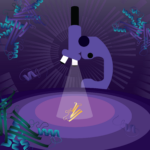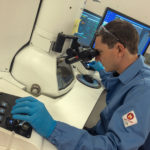Through a novel approach detailed in Nature, a massive computational analysis of microbiome datasets by the JGI focuses on unveiling protein functional diversity.
JGI Adds Actinobacteria Chapter in the Genomic Encyclopedia of Bacteria and Archaea
In Cell Genomics, an international consortium led by researchers at the Joint Genome Institute team generated 824 new Actinobacteria genomes, which were were combined with nearly 5,000 publicly available ones and 1,100 metagenome-assembled genomes (MAGs) reconstructed from sequenced environmental samples in a previous study.
JGI Helps Develop Computational Pipeline for RNA Virus Sequences
In the journal Cell, scientists from a team led by researchers at Tel Aviv University in Israel, the National Center for Biotechnology Information, and the DOE Joint Genome Institute (JGI) describe a computational pipeline that can specifically scan for RNA virus sequences.
Biosciences Researchers Part of Genomic Analysis of Giant Bacteria Found in Guadeloupe Mangroves
In Science, a team led by Jean-Marie Volland, a scientist with joint appointments at the DOE Joint Genome Institute (JGI) and the Laboratory for Research in Complex Systems, and Silvina Gonzalez-Rizzo and Olivier Gros of the Université des Antilles, described the morphological and genomic features of a giant filamentous bacterium, along with its life cycle.
JGI Helps Shed Light on How Antarctic Algae Have Adapted to Cold
In Nature Ecology and Evolution, researchers from the Chinese Academy of Fishery Sciences, the University of East Anglia, and the JGI have explored the genome of the polar algae Microglena sp. YARC. The green alga harbors extra genes for proteins requiring zinc, and those genes turn out to be key for the phytoplankton’s ability to live in cold polar waters. Learn more here on the JGI website.
Was this page useful?








